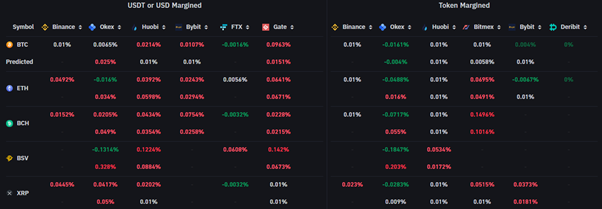
-- 👨🎓Educational 👨🎓- ❓What are the different Types of DLT? --
🔹BLOCKCHAIN ($BTC)
🔹DAG - Directed Acyclic Graph ($IOTA)
🔹HASHGRAPH ($NOIA)
🔹HOLOCHAIN ($HOLO)
🔹TEMPO ($eXRD)
Follow on for details and how each of them work.
🔹BLOCKCHAIN ($BTC)
🔹DAG - Directed Acyclic Graph ($IOTA)
🔹HASHGRAPH ($NOIA)
🔹HOLOCHAIN ($HOLO)
🔹TEMPO ($eXRD)
Follow on for details and how each of them work.

-- BLOCKCHAIN #1--
🔹E.g. $BTC $ETH
🔹Features
🔸Immutability - Can't change the ledger
🔸Enhanced Security - near impossible to hack due to distribution
🔸Faster Settlement - Faster than boomer payment systems
🔸Concensus - supports lots of different consensus mechanisms
🔹E.g. $BTC $ETH
🔹Features
🔸Immutability - Can't change the ledger
🔸Enhanced Security - near impossible to hack due to distribution
🔸Faster Settlement - Faster than boomer payment systems
🔸Concensus - supports lots of different consensus mechanisms

-- BLOCKCHAIN #2--
🔹How does it work?
🔸Transaction executed
🔸Network node verifies it
🔸Unique hash ID allocated along with transaction hash
🔸IDs are stored on the ledger
🔸Transaction is now immutable
🔹How does it work?
🔸Transaction executed
🔸Network node verifies it
🔸Unique hash ID allocated along with transaction hash
🔸IDs are stored on the ledger
🔸Transaction is now immutable

-- DAG (Directed Acyclic Graph) #1--
🔹E.g. $IOTA (Tangle)
🔹Features
🔸Near infinite scalability - moire users less time to validate
🔸Micro / Nano transaction friendly
🔸Quantum resistant - with one time signatures
🔸Parallel lined transactions
🔹E.g. $IOTA (Tangle)
🔹Features
🔸Near infinite scalability - moire users less time to validate
🔸Micro / Nano transaction friendly
🔸Quantum resistant - with one time signatures
🔸Parallel lined transactions

-- DAG (Directed Acyclic Graph) #2--
🔹How does it work?
🔸Transaction executed
🔸Before it validates, the transaction needs to validate 2 other previous transactions
🔸This creates transaction branches
🔸The longer the branch the more valid the transactions get
🔹How does it work?
🔸Transaction executed
🔸Before it validates, the transaction needs to validate 2 other previous transactions
🔸This creates transaction branches
🔸The longer the branch the more valid the transactions get

-- HASHGRAPH #1--
🔹E.g. $NOIA, $HBAR
🔹Features
🔸Enhance Fairness - makes it susceptible to influence
🔸Unique Data Structure - logs every 'gossip' sequence
🔸Random Gossip - random node chatter disperses data
🔸Viral Voting - nodes can predict, reaching agreement faster
🔹E.g. $NOIA, $HBAR
🔹Features
🔸Enhance Fairness - makes it susceptible to influence
🔸Unique Data Structure - logs every 'gossip' sequence
🔸Random Gossip - random node chatter disperses data
🔸Viral Voting - nodes can predict, reaching agreement faster

-- HASHGRAPH #2--
🔹How does it work?
🔸Uses a 'Gossip Protocol' to relay transaction information
🔸Once a transaction is executed
🔸Neighboring nodes spread the transaction via Gossip
🔸Via Viral Voting every node validates and then it gets added to the ledger
🔹How does it work?
🔸Uses a 'Gossip Protocol' to relay transaction information
🔸Once a transaction is executed
🔸Neighboring nodes spread the transaction via Gossip
🔸Via Viral Voting every node validates and then it gets added to the ledger

-- HOLOCHAIN #1--
🔹E.g. $HOLO
🔹Features
🔸Agent-Centric - Nodes can validate independently
🔸Energy Efficient - due to is different nature of validation
🔸Ture distributed - each none maintains its own ledger
🔸User Empowerment - Users control their own info on the DLT
🔹E.g. $HOLO
🔹Features
🔸Agent-Centric - Nodes can validate independently
🔸Energy Efficient - due to is different nature of validation
🔸Ture distributed - each none maintains its own ledger
🔸User Empowerment - Users control their own info on the DLT

-- HOLOCHAIN #2--
🔹How does it work?
🔸Each node holds its own ledger
🔸Via 'DNA' rules the Holochain network verifies each individual ledger
🔸There is no global validation process
🔹How does it work?
🔸Each node holds its own ledger
🔸Via 'DNA' rules the Holochain network verifies each individual ledger
🔸There is no global validation process

-- TEMPO #1--
🔹E.g. $eXRD
🔹Features
🔸Sharding - Each node on the network keeps its own shard
🔸Gossip Protocol - Nodes broadcast all their info to synchronize shards
🔸Logical Clocks - No time stamps, but a incremental sequence of transactions is used
🔹E.g. $eXRD
🔹Features
🔸Sharding - Each node on the network keeps its own shard
🔸Gossip Protocol - Nodes broadcast all their info to synchronize shards
🔸Logical Clocks - No time stamps, but a incremental sequence of transactions is used

-- TEMPO #2--
🔹How does it work?
🔸Each node holds just a 'Shard' / piece of the main ledger
🔸These shards are synchronized using the Gossip protocol
🔸To validate a transaction the nodes follow the sequence of transactions rather than a timestamp.
🔹How does it work?
🔸Each node holds just a 'Shard' / piece of the main ledger
🔸These shards are synchronized using the Gossip protocol
🔸To validate a transaction the nodes follow the sequence of transactions rather than a timestamp.

• • •
Missing some Tweet in this thread? You can try to
force a refresh




